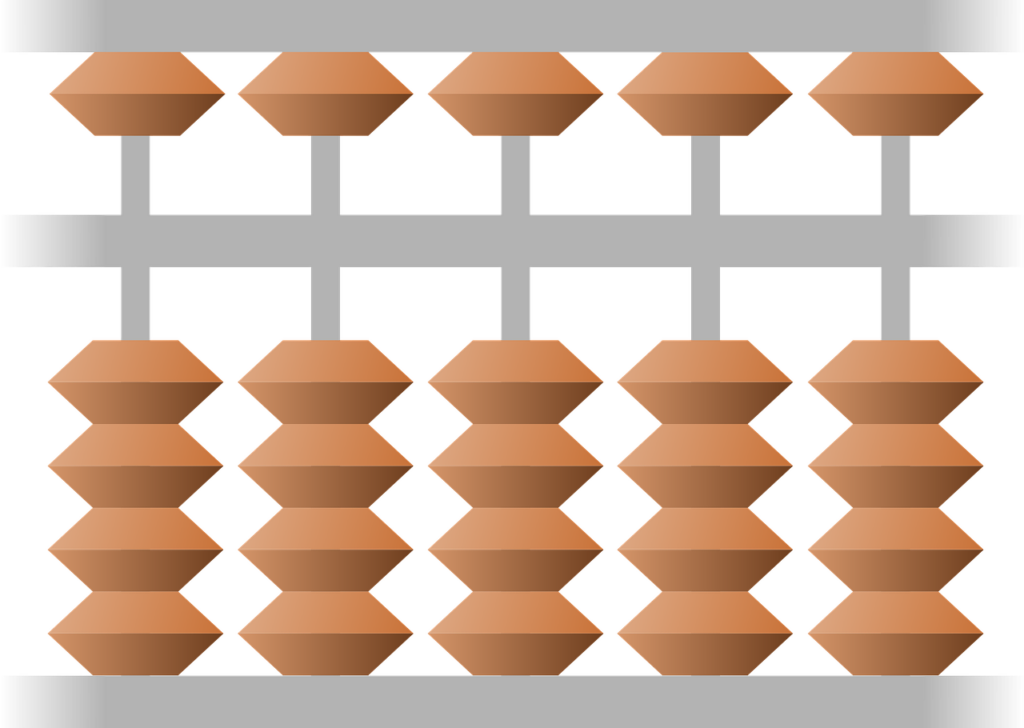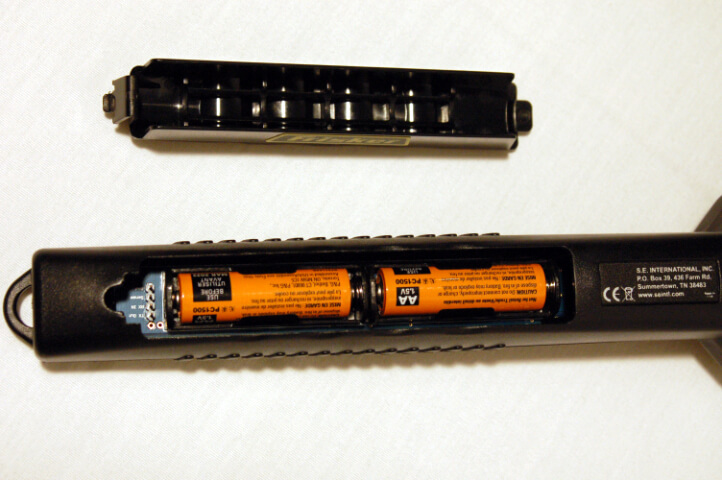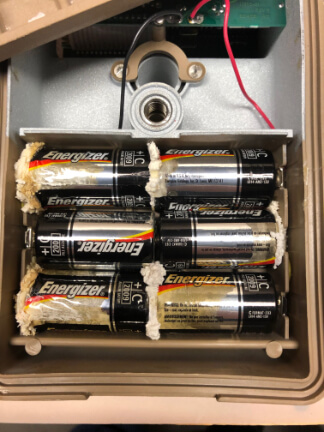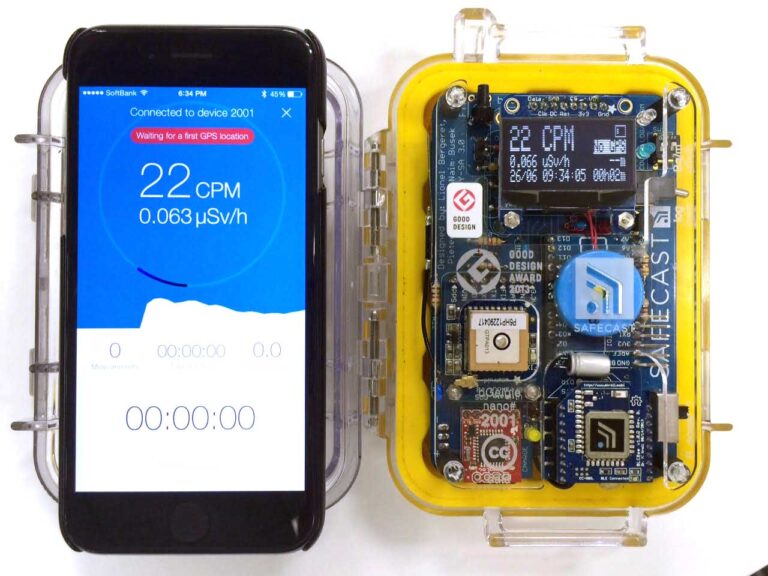Introduction
This guide provides a very simple yet thorough review for buying a Geiger Counter that will meet your radiation measurement needs. This guide covers hand-held Geiger Counters employing Geiger-Müller (GM) tube type of radiation detectors. Radiation counters not employing GM detectors are not covered. No specific brand or model is mentioned herein, so it will be an unbiased guide designed and acting in your best interests.
There are a lot of Geiger Counters available in the market so knowing what you are attempting to measure will dictate what kind to buy. Not all Geiger Counters are equal, nor is price the only differentiator. Detector sensitivity and the functional capabilities of the accompanying electronics are key factors in choosing the right Geiger Counter. Other factors include the display type, measurement units, ease of use, battery life, construction features and more. We will briefly touch on all these subjects so you can make better decisions about what will best fit your particular mission.
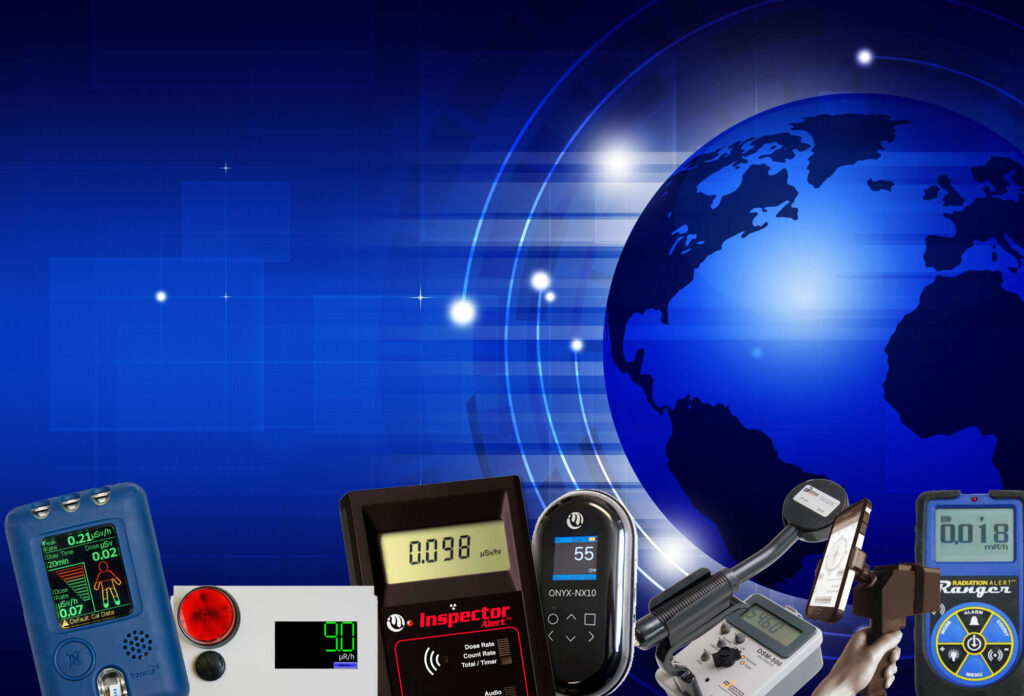
1. What do you want to measure ?
The most important item to get correct is to pick the right Geiger-Müller (GM) detector for the job or application. The detector parameters primarily focus on the type of radiation you wish to detect and measure. Please note that no one GM detector is perfectly suited for all applications.
A. Radioactive contamination on objects or persons
Purpose: Measure the level of gross radioactivity (count rate) on or possibly in objects and people. Widely used to measure for external radioactive contamination.
GM Detector Type: End window or pancake style, thin mica window
Radiation Detected: Alpha, Beta, Gamma, X-Ray
Measurement Units: Counts per minute (cpm), counts per second (cps), Becquerel (Bq)
Contamination Limits: Limits of activity will be different depending upon the isotope, organization or country. A general rule of thumb is that activities measuring two times background should require action
Detection Range: Typically, 0 to 350,000 cpm

B. Surrounding (Ambient) Radiation Level
Purpose: Measure the ambient exposure rate (also known as dose rate). These exposure rate measurements are used to calculate the accumulated dose received by materials and people exposed to radioactive environments.
GM Detector Type: Energy compensated tube
Radiation Detected: Gamma, X-Ray, High Energy Beta
Measurement Units: Roentgens (R) or Sieverts (Sv)
Dose Limits: In the US, the yearly public dose limit is 100 mrem, radiation workers are 5000 mrem (5 rem)
Dose Rate Limits: Will vary by organization, application, or mission to ensure that the accumulated dose limits are not exceeded.
Detection Range: This will vary depending upon the GM tube and electronics counting speed and dead time correction.
Here are a few typical ranges:
- Low Range: 2 uR/h to 150 mR/h (HP-300A)
- Mid Range: .03 mR/h to 3 R/h (HP-270)
- High Range: .1 mR/hr to 80 R/h (HP-290)
- Very High Range: 10 mR/h to 300 R/h (HP-310)
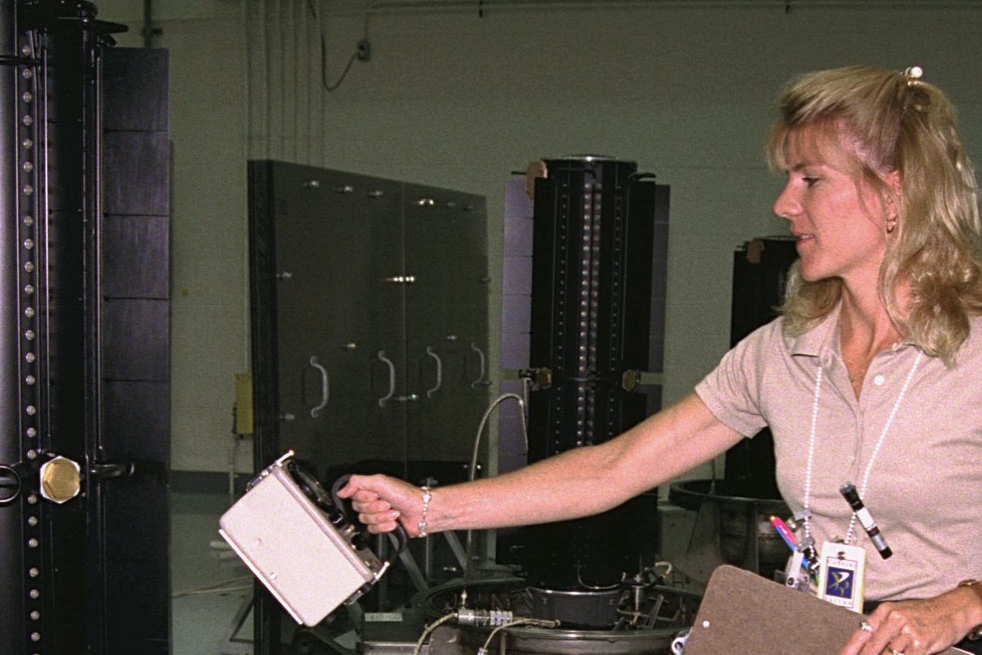
C. Multi-Purpose Readings
Purpose: Measure both contamination activity and exposure rate. Note that these multi-purpose instruments do not accurately measure exposure rates across all energies unless an energy filter is added.
GM Detector Type: End window or pancake style, thin mica window
Radiation Detected: Alpha, Beta, Gamma, X-Ray
Measurement Units:
- Counts Per Minute (cpm)
- Counts Per Second (cps)
- Becquerels (Bq)
- Roentgens Per Hour (R/h)
- Sieverts Per Hour (Sv/h)
Detection Range:
- 0 to 350,000 cpm
- 0 to 5,000 cps
- .001 to 110 mR/h
- .01 to 1,100 uSv/h
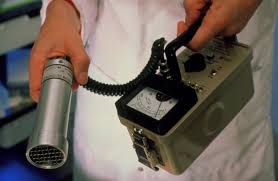
2. analog or digital display ?
With a few exceptions, most Geiger Counters are outfitted with either an analog meter or a direct digital readout type of display. The exceptions are specialty counters that connect to external devices like smart phones or other remote devices where the radiation levels are displayed.
One type of display is not better than the other; they each have their pros and cons. If you are not a scientific type of person and want something very direct and simple, your better choice will most likely be a digital type of display. If you are serious about trending and don’t mind range switching and performing mental multiplication then an analog type of display may suit your needs better.
Analog Meters
Older generation Geiger Counters employed analog meters with various scales printed on the faces to reflect the detection range. The meter’s needle pointed to the present level and users would have to interpolate the needle position to the numerical scale to ascertain the exact numeric value. Most scales are linear with an equal distance between all numerical markers. Some scales are logarithmic to cover a much broader detection range. The lower end measurement resolution on logarithmic scales are sacrificed to the benefit of the much higher readings which are usually where the most interest lies anyway.
Digital Meters
These provide direct readout of the measurement value as is normal with almost all other modern measurement devices today. Most use a liquid crystal display (LCD) with some type of backlighting to accommodate reading in dark areas. Early generation LCD type displays were generic and used rather cryptic acronyms which had to be learned to know what you were looking at; especially where more than one mode of operation was available. But most modern lcd’s today are custom designed to avoid this type of confusion. The nicest LCD’s not only display the direct readout value, but also include the units of measurement, battery condition, operational mode, and a simulated analog meter scale of some sort.
Some of the potential drawbacks of digital LCD’s are:
- Contrast can be poor; especially in bright conditions outdoors. Newer LCD’s use the ambient light reflection to enhance contrast that provide superior outside contrast.
- Cold temperatures will darken LCD’s to the point they are entirely black. If you expect to use these in very cold conditions, be sure to see what the LCD specs are. In most cases the LCD will be the limiting temperature factor for the entire instrument.
- Susceptible to breaking if dropped. Some instrument designs add a light plastic cover to better protect the display against breakage and scratches.
meter lighting
Measurements might have to be taken under dark conditions. If your mission calls for that, you’ll want to be sure the meter or LCD has some sort of lighting available. Newer systems have built-in light sensors and will automatically turn on their backlight anytime it senses dark conditions. Most common Geiger Counters include either a momentary switch so the light is only on briefly to preserve battery life, or a simple on/off switch controlled by the user.
range switching
In most instances, analog meter Geiger Counters are accompanied by a manually operated scale range switch as the printed scales cannot span the entire detector range in a legible manner. Users would have to cycle a range multiplier switch ie. x0.1, x1, x10, x100, x1000 etc. until the needle would indicate a value somewhere on the meter scale. Once that was accomplished the user would multiply the selected range multiplier value by the needle reading to derive at the measurement value. This system works very well; however, it can be confusing to many initially until they become used to this technique. If you are one who does not like to constantly perform mental math, this may not be your best option.
Professionals often still prefer these type of analog systems as it is easier to:
- spot any noticeable changes to the meter reading from its normal value
- view any trending to higher or lower values on the meter
manual or automatic range switching
Most digital meters have auto-ranging so users need not do anything. Some are still equipped with manual ranging so users are very aware of the rising levels. Most analog meters require range switching and is done by manual means.
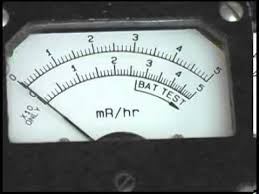
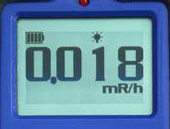
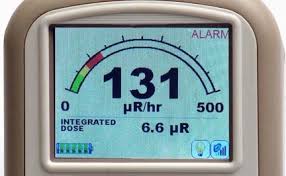
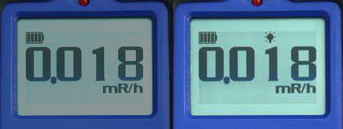
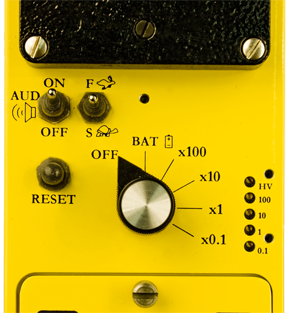
3. environmental conditions
An important consideration often overlooked is the environment in which the Geiger Counters will be used. If you are operating them in a clean, office like condition where room temperature and humidity are standard, no worries. If you are outdoors and susceptible to extreme temperatures, humidity or electrical interferences, then you better pay close attention to which models you are buying.
Geiger Counters are scientific measurement devices and can be very susceptible to environmental conditions. Buyers should make sure the instrument specifications cover the conditions under which these instruments will be operated.
temperature
Extreme hot and cold temperatures can be problematic. Cold temperatures will dim if not blacken your digital lcd (liquid crystal displays). Frigid temperatures may also require one or minutes of warm up time before the electronics have stabilized. Battery life is also typically impacted and much shorter than advertised under normal conditions.
humidty
Humidity is often overlooked as a potential problem. Unless the electronics are conformal coated with a protective coating or encased in a weatherproof enclosure they can be susceptible to electrical disturbances and potential damage. If you’re ever going to use these instruments outdoors when it’s raining or snowing, you’ll want to check out if the enclosure is weather tight or not. Most Geiger Counters are not rated to be submersed underwater; however, there are special underwater detectors that transmit their signals to above water electronics.
emi/rfi interferences
When Geiger Counters are used around industrial complexes they might be susceptible to EMI & RFI interferences and cause spurious measurement readings. If not properly protected, certain radio frequencies and noisy emissions from large motors, relays, etc. can penetrate the Geiger Counter’s protective casing and disrupt the internal electronics. Metal encased Geiger Counters inherently have better shielding against these emissions, whereas special coatings need to be applied to any plastic enclosures. If you are working in this kind of an environment, ask the manufacturer to provide you with an ANSI N42.17 report showing the EMI/RFI test results.

4. features
Once you get past the basics of counting, type of display, and environmental considerations you next will need to consider what features you might want to do the job at hand. Below are a number of features offered on various Geiger Counters that enhance and extend their capability to better support a variety of applications.
counting modes
Ratemeter Mode: is the defacto standard operating mode used for all Geiger Counters. This mode is the rate at which counts are accumulated for a given period. Counts per Minute (cpm) is a perfect example; Roentgens per hour (R/h) is another.
Integrate Mode: is where the counts are continuously accumulated while in this mode. The integrate mode is great for acquiring greater counts for statistical accuracy.
Timed Count Mode (also known as scaler mode): This mode accumulates counts for a set time period. Users often can select one of the pre-configured time selections ie. 10 sec, 30 sec, 1 min, 10 min etc. Some systems will let the user enter a custom time period.
Precision Count Mode: This mode accumulates counts until a desired precision level is obtained. So whether it takes 15 seconds or 15 hours to acquire enough counts to have a 95% (or whatever precision level is selected) count accuracy it will continue counting as long as is necessary.
Peak Trap Mode: Is a really convenient mode to have if the only thing you want to know is the highest reading. This mode only displays the highest level encountered since the instrument or mode was activated. The display never changes until a higher level is measured. So once you are done with your survey, you only need to concern yourself with one number, the one trapped on the display. It is a really beautiful and simple way to pass or fail whatever you are measuring.
batteries
Battery life will range from a few dozen hours to upwards of a few thousand for the newer low power electronics. While I’ve seen those that claimed these higher lifespan’s I found they typically fell way short, but were impressive none the least.
Stated battery life times declared in the product specifications represent normal (low) count rates in room temperatures. Those with longer life-times will inherently have lower operating costs. Most customers have preferred standard, off-the-shelf type batteries they can easily acquire anywhere. This requirement came about after the earliest Geiger Counters had very special batteries that were very expensive.
Some newer style instruments now use rechargeable batteries which are no different than our smart phones. These models offer operational cost savings as you don’t need to be buying new batteries. The downside is if you are using the instrument in the field and have to shut down until the instrument can get recharged. Sometimes you can be offline for the rest of the day if your only power sources is many miles
Be aware that battery life can be reduced by half or more if you are using them in cold temperatures, if the count rates are high, or if you have audio visual alarms on much of the time.
Your premium Geiger Counters will have the batteries accessible for replacement without tearing the instrument apart or require use of special tools. Any Geiger Counters that require cracking the instrument open to replace batteries are more susceptible to inadvertent damage to the internal components or wiring that may result in operational degradation or even upsetting the calibration.
Premium Geiger Counter designs also incorporate a separate, sealed battery compartment that is isolated from the internal electronics. Batteries kept in instruments too long can bulge and leak their caustic chemicals. These chemicals will quickly destroy your electronics and render your expensive investment useless. This is a very common phenomenon and is one reason why most reputable calibration laboratories automatically install new batteries as part of their service. So don’t compromise because you think this won’t happen to you. Here is an example of just how bad these batteries can get if left for too long.
ruggedness
Geiger Counters are scientific instruments and should always be treated as such. Most manufacturers have done excellent work in packaging the instrument bodies to be rugged and durable. Many of the older style analog meters with metallic cases have been around for decades and are still working very well. Most instrument bodies are designed to take a three foot drop onto a concrete floor; however open window GM detectors are not designed to take this kind of harsh abuse. Their thin mica windows are susceptible to damage and will cost you the price of a new GM tube, labor and a fresh calibration. So be careful and treat it as a piece of scientific instrumentation and you can expect a very long life is use.
Be sure to check if the unit you are interested in has an optional outer protective case or boot available. These are often patterned after multi-meter designs that have proven very durable in tough conditions.
audio clicking
One nice feature is to have the very familiar audio clicking sound that Geiger Counters are well known for. Most Geiger Counters have this as a base feature. As nice as it is to audibly sense when radiation levels increase as you are doing a survey, it’s also nice to turn it off at certain times. So you’ll want to make sure it has an on/off switch if not a variable audio level control. There also may be times you’ll want the clicking sound turned such as when you are taking measurements in populated places that might frighten people, or if you are taking long counts and would rather not be distracted.
alarms
Although not always needed, if your mission has set radiation levels that require action then audio and visual alarming are nice features to have. Most instruments with this feature will have user adjustable setpoints. You’ll want to check how easy it is to adjust the alarm setpoints. Some will want to be able to reprogram on the fly without obstruction, while other programs may wish to keep it set and locked so users can not tamper with it. You will have to decide which is better for your situation.
You’ll also want to see how many alarms are included. Some have one, two or even three alarm levels. It’s not uncommon to have a pre-warning or alert level before the actual alarm is reached.
Finally, be sure to check that the audio level output is well above the ambient noise levels so it can be heard. Some industrial environments can be very noisy. In such cases there may be an audio jack to plug in a headset.
anti-saturation
A fatal flaw with Geiger Counters is that when the GM tube becomes saturated, the detector signal will actually begin to drop rather than going higher as expected. If uncorrected, this would lead the user to believe the radiation level is dropping when in fact quite the opposite is true. If you expect to be around or possibly find yourself in potentially high radiation fields that approach the upper end of the detector’s capability, you will definitely want to be sure your Geiger Counter has anti-saturation protection. This protective feature will either manifest an alarm condition and/or lock the radiation reading to high (sometimes both). When this occurs, the user should quickly remove themselves from the high radiation area and then reset the Geiger Counter once they are back to areas with more normal levels.
data logging
Some Geiger Counters offer data logging. This is a nice feature for capturing data electronically as opposed to writing measurements down. Data logging not only includes the measurement, but will often also identify the time, alarm status, and even the place if accompanied by a GPS or other positioning type system. Data logging can be done manually or at a set time interval. The setup for these types of systems can become complex and as such are usually only found in the more advanced and costly Geiger Counters. That trend is changing; however, with the advent of more affordable electronics and memory storage. Features you want to check for are:
- How many points are captured, what data does it capture and how do you retrieve all the data.
- Is there a PC program or does it produce a simple file that can be opened by Excel or a database program?
- Can it feed live data or only after its completed data logging?
- What happens if the memory is filed, does it stop or overwrite the earliest stored data?
- Can data collection be started remotely or only via the onboard instrument control?
external communications
Some Geiger Counters are able to communicate with other devices for the purpose of retrieving stored data, setting instrument parameters, or performing calibration. Communications can be over a hard wire to your PC or wirelessly via Bluetooth. This can be a neat feature to add extra functionality into the accompanying PC or mobile device programming rather than trying to incorporate it all into the Geiger Counter itself.
There are open source shared networks whereby people can share live data around the world. This is a great tool if and when a nearby nuclear incident occurs.
